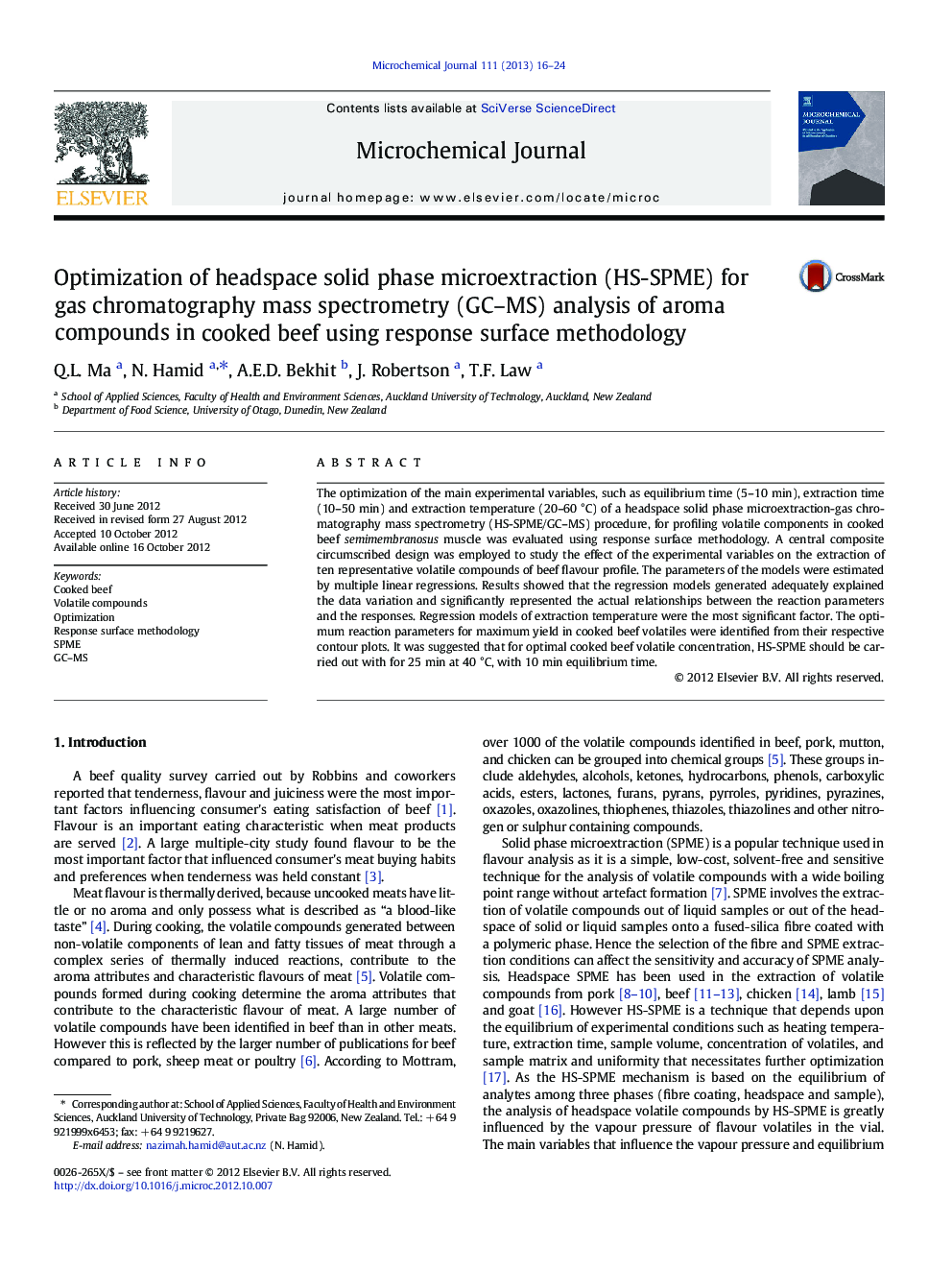| Article ID | Journal | Published Year | Pages | File Type |
|---|---|---|---|---|
| 1227795 | Microchemical Journal | 2013 | 9 Pages |
The optimization of the main experimental variables, such as equilibrium time (5–10 min), extraction time (10–50 min) and extraction temperature (20–60 °C) of a headspace solid phase microextraction-gas chromatography mass spectrometry (HS-SPME/GC–MS) procedure, for profiling volatile components in cooked beef semimembranosus muscle was evaluated using response surface methodology. A central composite circumscribed design was employed to study the effect of the experimental variables on the extraction of ten representative volatile compounds of beef flavour profile. The parameters of the models were estimated by multiple linear regressions. Results showed that the regression models generated adequately explained the data variation and significantly represented the actual relationships between the reaction parameters and the responses. Regression models of extraction temperature were the most significant factor. The optimum reaction parameters for maximum yield in cooked beef volatiles were identified from their respective contour plots. It was suggested that for optimal cooked beef volatile concentration, HS-SPME should be carried out with for 25 min at 40 °C, with 10 min equilibrium time.
► Headspace SPME optimization of cooked beef volatiles using response surface methodology ► Regression models of extraction temperature were the most significant factor. ► The optimum reaction parameters for maximum yield in cooked beef volatiles were identified from overlaid contour plots. ► Optimal extraction of cooked beef volatiles using HS-SPME was 25 min at 40 °C with 10 min equilibrium time.
